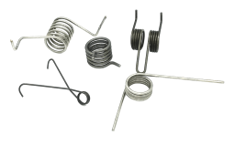Technical Facts
The unsung heroes of engineering and mechanics are springs; they are small (compared to the components in which they are installed) but mighty parts that do amazing things. Our goal is to provide enthusiasts, professionals and the general public with a wealth of technical facts, knowledge and insight into the complex world of springs.
Definition
A spring is a mechanical device that stores and releases mechanical energy when subjected to deformation or force. It is often made of a flexible material such as metal or plastic. Springs are used in a variety of applications to provide resistance, absorb shock, store energy, or keep two surfaces in contact. They come in a variety of shapes and sizes, including coil springs, leaf springs, torsion springs, and compression springs, each of which is designed to perform a specific function based on its unique properties and characteristics. Springs play an important role in the functionality and performance of many devices, equipment and systems.





